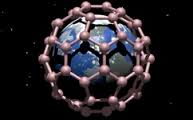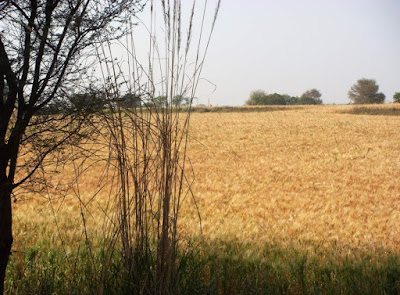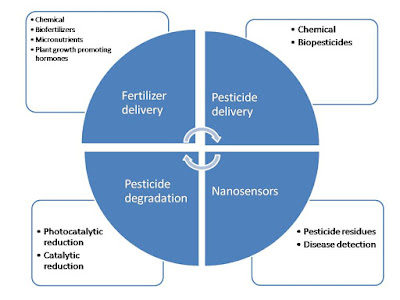
The term ‘Nanotechnology’ was first defined in 1974
by Norio Taniguchi of the Tokyo Science University as the study of manipulating
matter on an atomic and molecular scale. The definition of nanotechnology
is based on the prefix ‘nano’ which is from the Greek word meaning ‘dwarf’.
Technically the word ‘nano’ means one billionth of something. A nanometer is
one billionth of a meter. The word nanotechnology is generally used when
referring to materials with the size of 1 to 100 nanometers (nm). Nanotechnology
is a new branch of science that deals with the generation and alteration of
materials to nanosize. Materials with a particle size less than 100 nm at least
in one dimension are generally classified as nanomaterials. These materials
display different properties from bulk materials due to their size. These
differences include physical strength, chemical reactivity, electrical
conductance, magnetism and optical effects. Therefore, nanotechnology is the
manipulation or self-assembly of individual atoms or molecule or molecular
cluster into structures to create materials and devices with new or vastly
different properties. Nanosensors and monitoring system enabled by
nanotechnology will have a large impact on future precision methodologies.
Hence, nanotechnology employs materials (NPs) having one or more dimension in
the order of 100 nm or less.
Nanomaterials (NMs) of inorganic and organic origin are used for nanoparticles (NPs) synthesis by a variety of physical and chemical
methods. The techniques for making nanoparticles are generally involved either
a top-down approach or a bottom-up approach. In top-down approach, size
reduction is achieved by various chemical and physical treatments such as
milling, high pressure homogenization and sonication while in bottom-up synthesis,
the nanostructure building blocks of the nanoparticles are formed first and
then assembled to produce the final particle.
Among inorganic materials, metal oxide nanoparticles
such as ZnO, TiO2, AgO, MgO are of particular interest as they are
physically and optically stable with tunable optical properties. Metallic
nanomaterials are very interesting materials with unique electronic and
electrocatalytic properties depending on their size and morphology and include
the utilization of nanostructured materials with specific forms like quannologytum
dots (QDs). Other inorganic materials such as montmorillionite and other clay
nanoparticles have a structure of stacked platelets with one dimension of the
platelet in the nanometer scale. Nano-clays have a high aspect ratio that
provide more interactive surface when exfoliated and dispersed well. Organic
materials such as carbon nanotubes, lipids and polymers are versatile materials
with multiple applications.
Carbon nanotubes (CNTs) are hollow cylindrical tubes
composed of one, two or several concentric graphite layers capped by fullerenic
hemisphere, which are referred to as single-, double-, and multi-walled CNTs. The
unique electronic, metallic and structural characteristics make CNTs an
important class of materials. The possibility of electron transfer reaction due
to their structure dependent metallic character and their high surface area
provides ground for unique biochemical sensing system. Solid lipid
nanoparticles are delivery systems that comprise of aqueous dispersion of solid
lipids or dry powder such as triglycerides, steroids, waxes, long chain fatty
acids and emulsifiers prepared by high pressure homogenization. Polymeric
nanoparticles made from natural and synthetic polymers by wet synthetic routes
are widely used due to their stability and ease of surface modification.
Nanoparticles prepared from biopolymers or natural sources possess merits such
as available from replenishable agricultural (cellulose, starch, pectin) or
marine (chitin and chitosan) resources, biocompatibility, biodegradability and
other ecological safety. Chitosan is one of the most promising NMs due to its
excellent biocompatibility, complete biodegradiability and non-tixic nature.
The degradation products of chitosan are harmless natural metabolites. It is
obtained by the deacetylation of chitin, the second most abundant natural
polymer after cellulose, which is found in the shells of crustaceans (crabs and
shrimp), the cuticles of insects, and the cell walls of fungi. It is suitable
for electrochemical sensors due to its transparent nature. Quantum dots (QDs) are inorganic nanocrystals,
approximately 1-100 nm in size, with unique properties of broad excitation,
narrow size-tunable emission spectra, high photochemical stability and
negligible photoleaching. They have been widely used, mainly as alternative to
fluorophores, for the development of optical
biosensors to detect ions, organic compounds and biomolecules such as nucleic
acids, proteins, amino acids, enzymes, carbohydrates. Dendrimers are known as organic
macromolecules with tridimensional (3D) and highly defined structure
functionality. The capability of these dendrimeric structures to stabilize and
maintain the integrity of metallic nanoparticles has been reported.
Nanoparticles are generally characterized by their
size, shape surface area, and disparity. The common techniques of
characterizing nanoparticles are scanning electron microscopy (SEM),
transmission electron microscopy (TEM), Fourier transform infrared spectroscopy
(FT-IR), UV-visible spectrophotometery, X-ray diffraction (XRD), dynamic light
scattering (DLS), energy dispersive spectroscopy (EDS).
Some nanomaterials
and their applications
|
Nanomaterials
|
Applications
|
|
Inorganic
Metal
nanoparticles
AgO, TiO2, ZnO, CeO2; Fe2O3,
FePd, Fe-Ni; Silica; CdTe, CdSe
Clay
Montmorillonite layerd double
hydroxides
Organic
Carbon nanotubes,
nanofibres
Lipids
Liposomes
Lippolyplexes
Solid lipid nanoparticles
Poymeric
Natural
Cellulose, Starch, Gelatin, Albumin
Chitin, Chitosan
Synthetic
Dendrimers
Polyethylene oxide
Polyethylene glycol
Polylactides
|
Delivery of
biomolecules (proteins, peptides, nucleic acids), biosensors, diagnostic
techniques, pesticide degradation
Delivery of
pesticides, fertilizers, plant growth promoting hormones
Biocatalysts, sensing,
Delivery of
DNA and pesticides, essential oils
Biocompatible,
biodegradable
Delivery of
DNA/RNA
Delivery of
pesticides and DNA/RNA
|






































